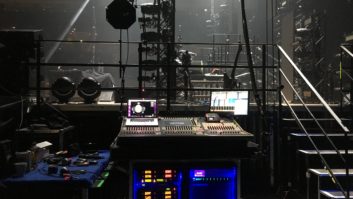
A regular fixture in the pre-show programme at ISE, the Smart Building Conference this year took the Internet of Things as its overarching theme. Ian McMurray delves a little deeper to find out how the two are related.
Do you ever wonder about the value of market research – especially the forward-looking type? Whether you turn to Lao Tzu, the sixth-century BC Chinese poet (“Those who have knowledge, don’t predict. Those who predict, don’t have knowledge”) or Nobel prize-winning scientist Nils Bohr (“Prediction is very difficult, especially if it’s about the future”) it seems that prognostication is fraught with challenges.
Take the Internet of Things (IoT), for example. Management consultancy Bain believes the market will be worth $470 billion by 2020. Gartner, on the other hand, forecasts a measly $3 billion in the same timeframe. Business Insider says that $6 trillion will be invested in IoT solutions over the next five years. General Electric ups the ante, claiming that IoT spend in industry alone will top $16 trillion during the next 15 years.
Given the disparity in the numbers, what can we learn from the research? In effect, two things. First: the IoT is a sufficiently significant phenomenon that the world and his proverbial wife are predicting its future. And second? Whatever the reality, those are some big numbers. Very big numbers.
The fact is that the IoT is coming to an office, factory or home near you – if it hasn’t done already. What does the industry believe is the current state of play?
Abused term
“IoT is an abused term,” laughs Bob Snyder, who was content chairman for the Smart Building Conference at this year’s ISE. “Like most tech phrases, it is often bent like a crowbar by vendors hoping to leverage it for commercial value. Of course, IoT already exists – but it is not yet commonplace. Several companies at the Smart Building Conference had case studies they could talk about – like IBM’s Watson IoT. Most people who ‘put down’ IoT expect the same kind of full-blown usage as you see today with the internet itself. We’re a long way from that scenario, but I would guess there are hundreds of IoT installations worldwide in industrial and commercial settings.”
Mitch Klein, executive director of the Z-Wave Alliance, sees things similarly.
“The Internet of Things is just the latest buzzword,” he believes. “The concept of connected things has been around for decades. Installers in the custom space have seen many companies provide whole home automation solutions before anything was called IoT. And those were machine-to-machine systems with connected devices creating what we now call a ‘smart’ home.”
Dave Pedigo, CEDIA’s vice president, emerging technologies, is even more positive.
“The Internet of Things is already a reality,” he claims. “According to Statista, there are now 23 billion internet-connected devices worldwide, which is nearly triple the number of internet-connected devices five years ago. The growth is exponential and rapidly accelerating. Things are changing so fast that it is almost impossible to humanly comprehend. We think that is exactly the point we are at with the proliferation of smart home devices.”
Perspectives can, however, depend on the market served.
“Yes,” says Kevin Hague, VP of corporate technology for Harman, “the IoT is an installable reality today – but it is not easy to integrate. Especially in the case of smart buildings, many systems are proprietary and special interfaces have to be built for each of them. This increases costs and slows the pace of IoT adoption for enterprise.”
Synonymous?
Not everyone, however, is convinced that the IoT and the technology behind smart buildings are all but synonymous.
“The IoT market is focused primarily on the DIY sector aimed at self-delivery, whereas the smart buildings market is one which is delivered by technology integrators,” says Philip Pini, residential business development manager at Crestron. “The differences are vast. You can purchase an IoT product from the internet or high-street retailer – whereas smart buildings technology is a purchase via a technology integrator. The principle behind the purchase is the same in terms of a control requirement – but the results can be entirely different.”
His point perhaps calls into question the extent to which there is crossover between intelligent commercial buildings, on the one hand, and smart automated homes on the other. Both categories share a focus on lighting, heating and security, for example – but are their similarities more or fewer than their differences?
“While the technology for smart buildings and automated homes can cross-pollinate, there are different needs and applications for each,” believes Paul Williams, vice president of product management at Control4. “Both smart buildings and homes require careful analysis of various factors. Commercial buildings require considerations such as operational scope and costs, while residential building needs tend to centre around the homeowner’s preferences and needs. “
Snyder is broadly in agreement with that analysis.
“In the conference, we used the phrases smart building, smart home and smart office to distinguish three different types of building environments,” he says. “Smart home can also encompass multi-dwelling units – so it’s not scale that distinguish the two, but the applications. The home invokes your lifestyle – whereas an office serves a utilitarian purpose, one that’s morphing from the traditional business operations to a new and more collaborative generation of work.”
“I would characterise ‘smart buildings’ as being commercial and ‘smart homes’ as being personal,” adds Hague. “There are many common elements to each space, such as environment temperature, lighting, blinds and so on. These will easily be consumed by standard IoT commands such as “Turn off the lights” – although there will be some additional layers for security and shared spaces.”
www.cedia.co.uk
www.control4.com
www.crestron.com
www.harman.com
www.zwavealliance.org







